Green Infrastructure: Multifunctional Benefits
When it rains, particularly in extreme cases, the rainwater needs somewhere to go. Unfortunately, in many urbanised environments, rainwater run-off finds its way into our sewer systems causing extreme flooding, and in turn can disrupt natural soakaways. This results in saturation and further flooding downstream. It’s therefore imperative to design projects that include areas where water can be intercepted and stored. Drainage systems are not just for conveyance, but can also irrigate green spaces above via our capillary cones.
These systems provide gardens and amenity at roof level: bioretention systems, detention basins and rain gardens. All three can accommodate rainwater run-off whilst attracting biodiversity. Swales – natural or engineered, permeable pavements and even sports pitches; which capture, store, attenuate and irrigate whilst cooling the air through evaporation, make that all-important space for and an intelligent way to manage water. Delivering positive moves to reduce the strain on inner-city sewer systems and help lessen the impact on potable water usage.
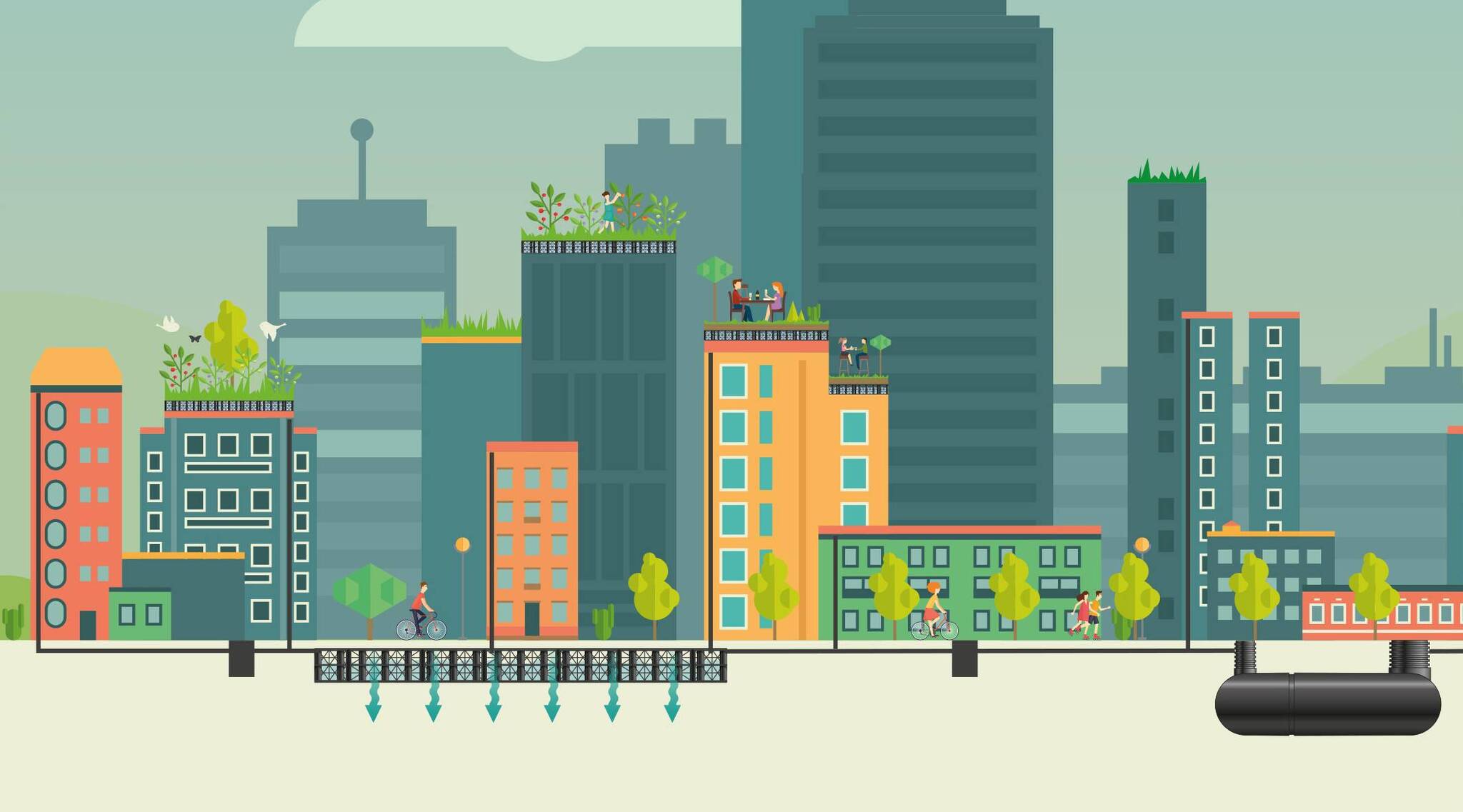
With hard man-made surfaces dominating our cities, managing run-off from heavy rainfall is vital to mitigating the risk of surface-water flooding. That’s why we’ve designed and manufactured systems to act as soakaways or to capture water at source and store it above and below ground. Our gravity and siphonic systems also allow for storage and filtration for reuse, whilst our attenuation solutions release water gradually to lessen the impact of heavy rainfall on nearby watercourses.
Importantly, boroughs around the UK are now charged a fee by the amount of surface water run-off they allow into waterways and sewers. We are already seeing domestic household charges for surface water run-off caused by car washing, therefore, planners and developers alike must look to more sustainable and cost-saving ways to store and reuse rainwater. In particular, areas around waterways, lakes and ponds need careful consideration with high water tables already posing a threat. Introducing engineered SuDS can capture water at source and store it for reuse for irrigation, utilities and car washing. And intelligent soft SuDS design can also help intercept run-off. Not only will this reduce the strain on potable water supply, but it will also eliminate the risk of incurring fines.
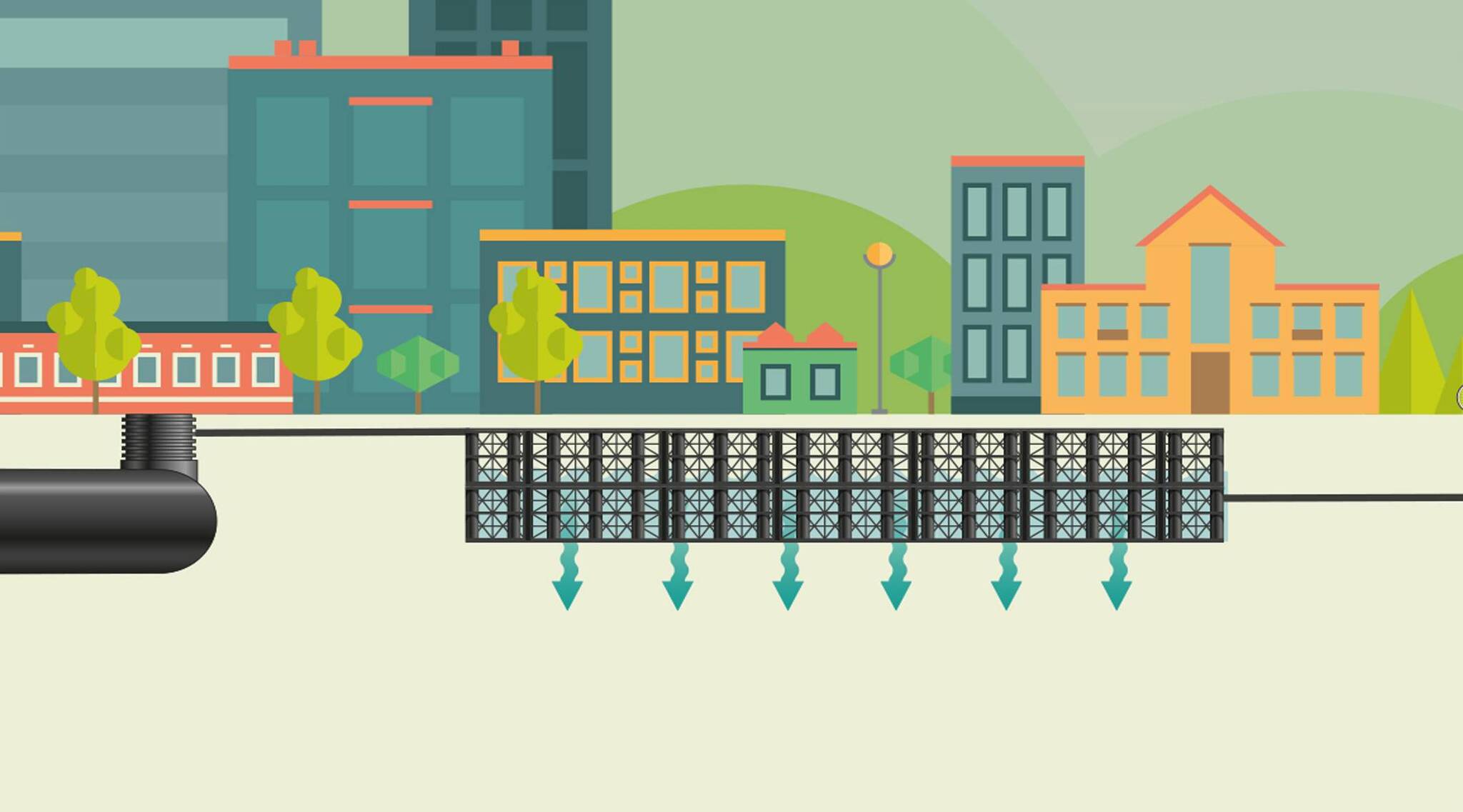
We understand the challenges developers face, including meeting industry legislation.That’s why we have engineered a range of water treatment solutions – including filter strips and silt traps – designed to filter and treat rainwater at source and that can enhance a natural infiltration system. The enhanced quality of the water can then be stored within our geocellular products, or within an overall ‘Roof to River®’ solution, to be reused.
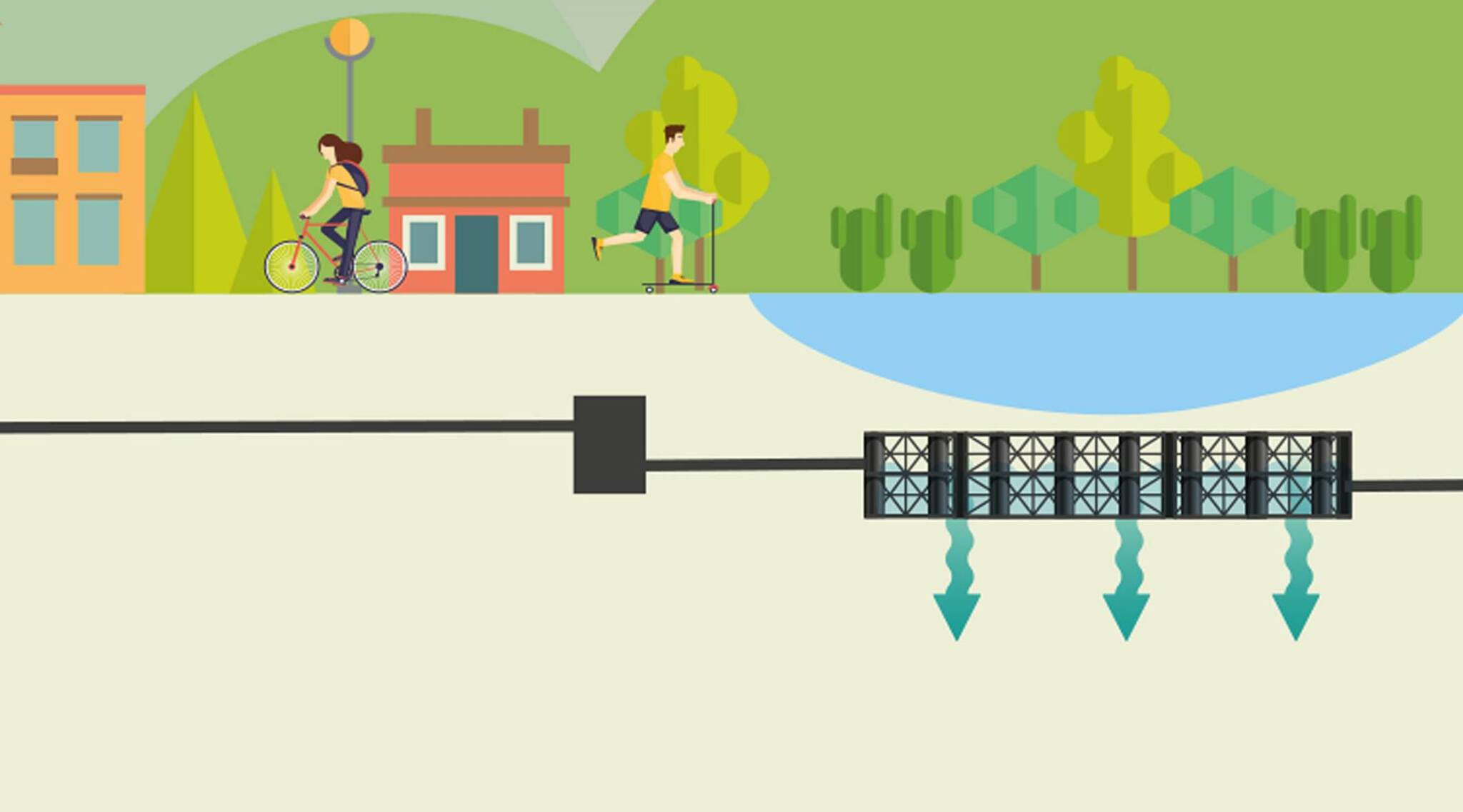
When creating green spaces for people to use – playgrounds for children, community gardens, green corridors that include cycle paths and walkways – it can be challenging to achieve the right balance between the functionality and benefits.
Our engineered water management solutions combined with soft SuDS techniques allows for the storage of higher volumes of water and can then regulate attenuation to ensure the creation and usability of these green spaces, where under normal circumstances, would be wasted land. Permeable paving allows rainwater to filter through to geocellular attenuation tanks below – storing and reusing rainwater for self-sustainable landscaping – and sports pitches have the ability to conceal and capture immense volumes of rainwater, whilst the geocellular tanks irrigate the pitch above allowing the grass to reduce temperatures through evaporative cooling.
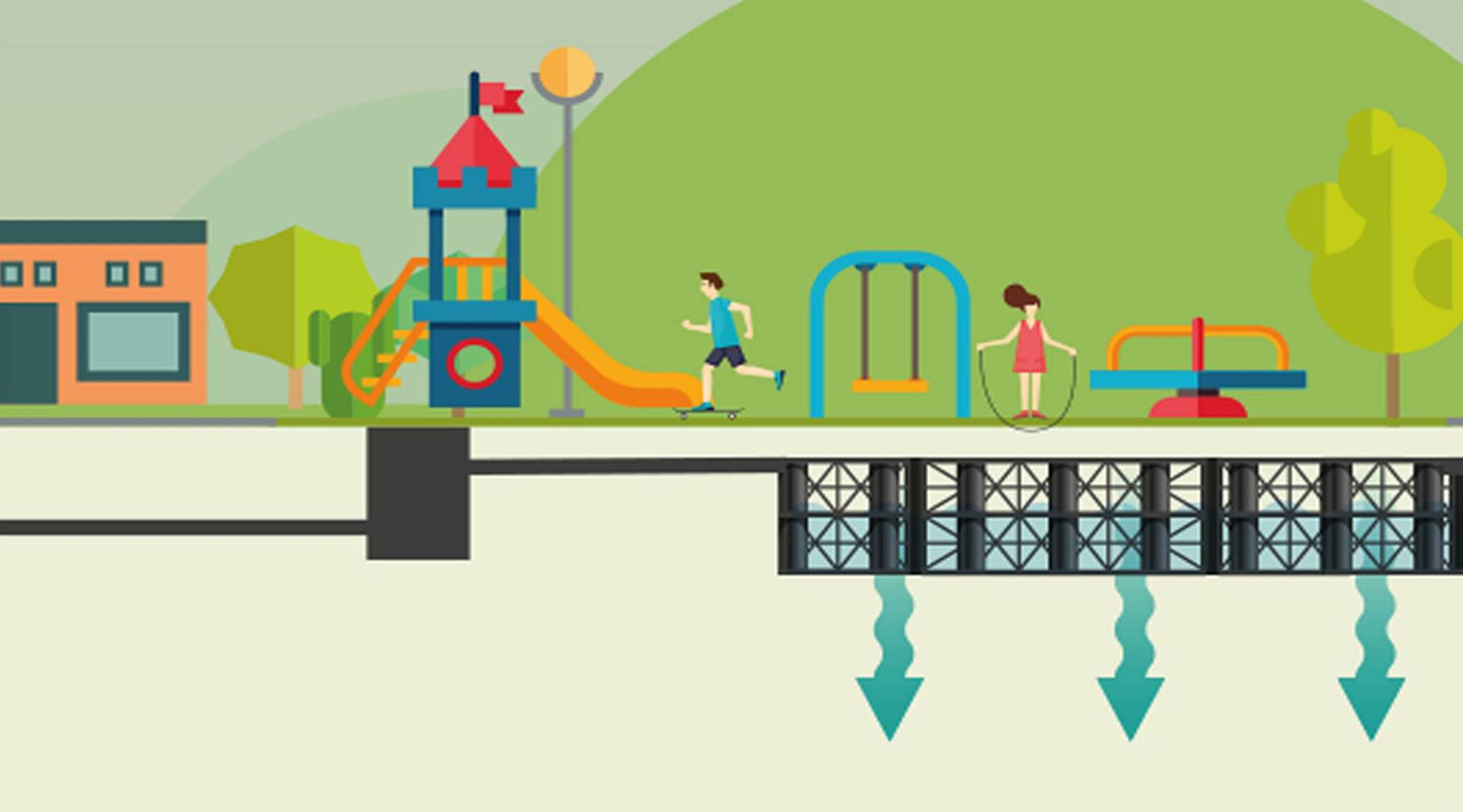
People respond well to green spaces. Even compact streets can be attractive when trees and clever planting are present. They even create safer routes for people to cross roads with distinct green architecture that drivers can recognise as pedestrian entry and exit points.
But to really make a difference whilst making space for water, we’ve developed products and systems to make spaces for people, too. Blue-Green roofs and podium decks (at ground and roof levels) can be achieved using Polypipe geocellular systems and unique Capillary Cones to manage irrigation. These newly formed green oasis can be utilised for multi-use purposes, such as amenity; roof bars, meeting areas and children’s play areas. Both commercial and residential developments can benefit from intelligent water management solutions and, whilst not strictly purely for enjoyment, can include parking for vehicles whilst water below is captured, treated and dispelled safely or reused. Roof applications absorb rainwater at source, reducing run-off whilst enabling water to evaporate more effectively, which helps to cool the surrounding environment.
There’s no Green without Blue
Water is how green spaces continue to survive. Managing it to ensure it’s used correctly, and controlled within our city environments in particular, is the first step to bring our green spaces to life. Designing water management solutions into commercial and residential developments, is vital if we are to create sustainable green spaces for people to use. Adopting this balanced approach will provide calming green spaces for recreational purposes, leisure and social interaction – developing a sense of community and harmony within the environment1 .
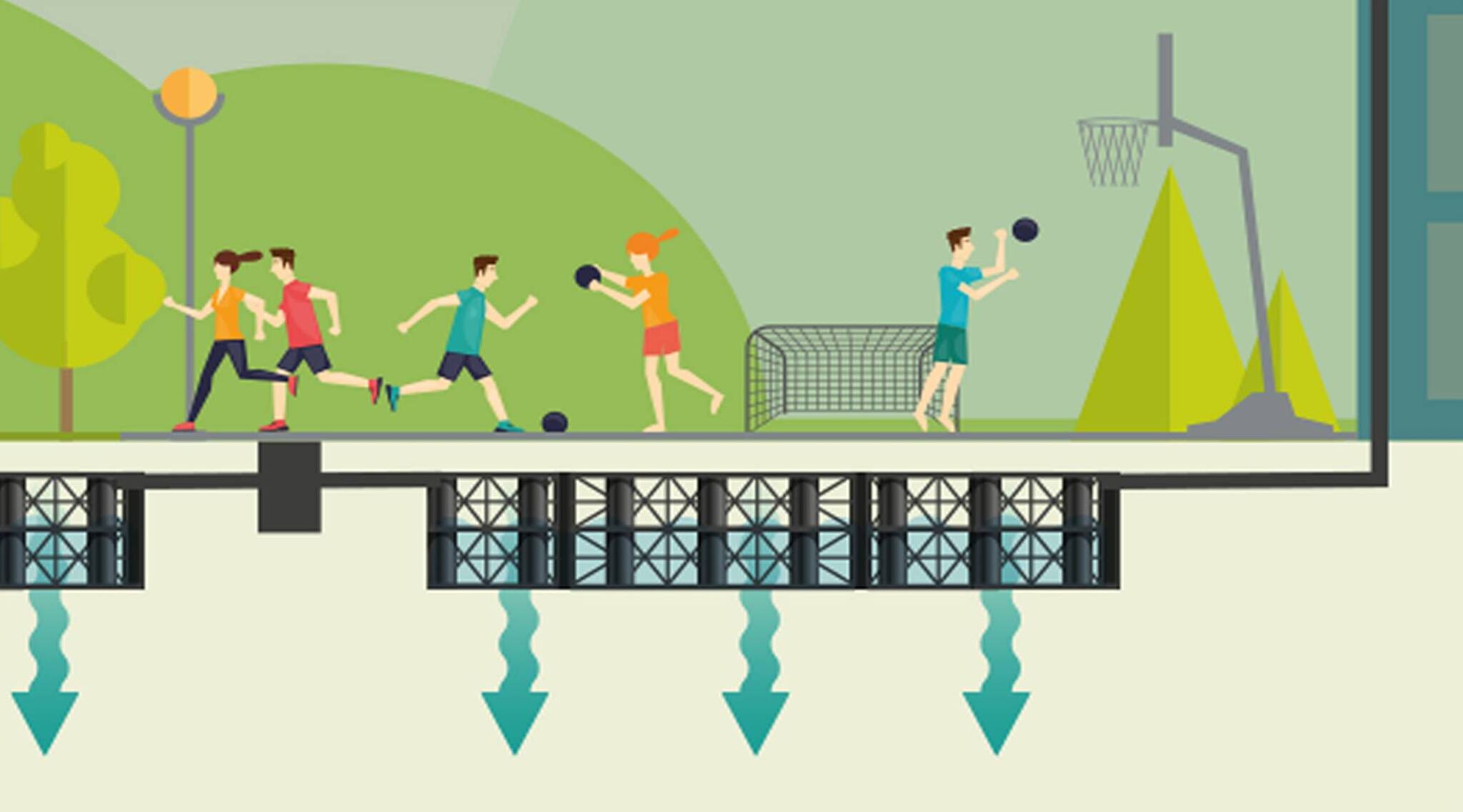
Growing sustainable produce as part of a community project is becoming more widespread – such as the Union Street Urban Orchard in London.
It’s understandable that neglected ‘once green’ patches of land around our cities and seemingly unsuitable areas of hard landscaping are ignored – with the trend to redevelop what is seen to be ‘potential prime land’. Untidy patches of ‘greenery’ can also suggest ‘hard work’ and in terms of poor water and soil quality, can hinder progress developing such land – or even cause urban consumer ecosystems to fail.
However, the National Capital Accounting directive can play a part in the planning process of such schemes, ensuring that these small pockets of importance are recognised for the value they bring to people’s lives and their wellbeing – not just for those who take part, but for those who benefit from the results. Designing, therefore, with the correct drainage systems are imperative to ensure that land water is managed correctly, sustainably and effectively to improve drainage and soil quality. Our land drainage systems are easy to install and can open up opportunities for otherwise unusable land – ultimately improving crop yields as well as the fabric of the community.
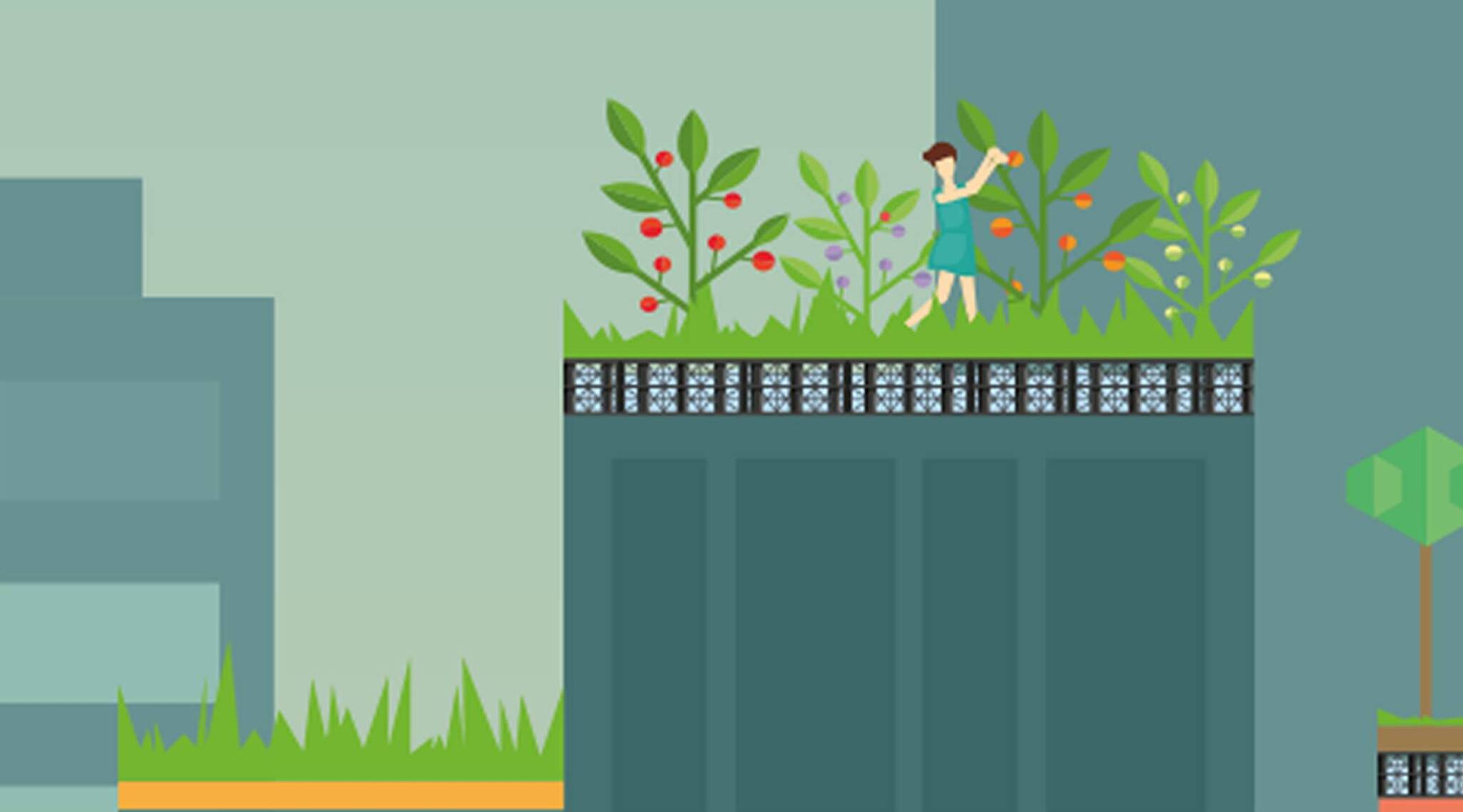
Green spaces are calming areas that promote wellbeing and positive health benefits. Where space is at a premium, Blue-Green roofs offer relaxation and a sense of community – particularly with rooftop areas designed to give families an opportunity to spend time outside – as well as promoting biodiversity and providing natural insulation for the building. Our engineered geocellular products are designed to collect and store water below podium decks, which can then be reused for the irrigation of trees and vegetation, building utilities or car washing. Because the water is gravity fed, there’s no need for pumps.
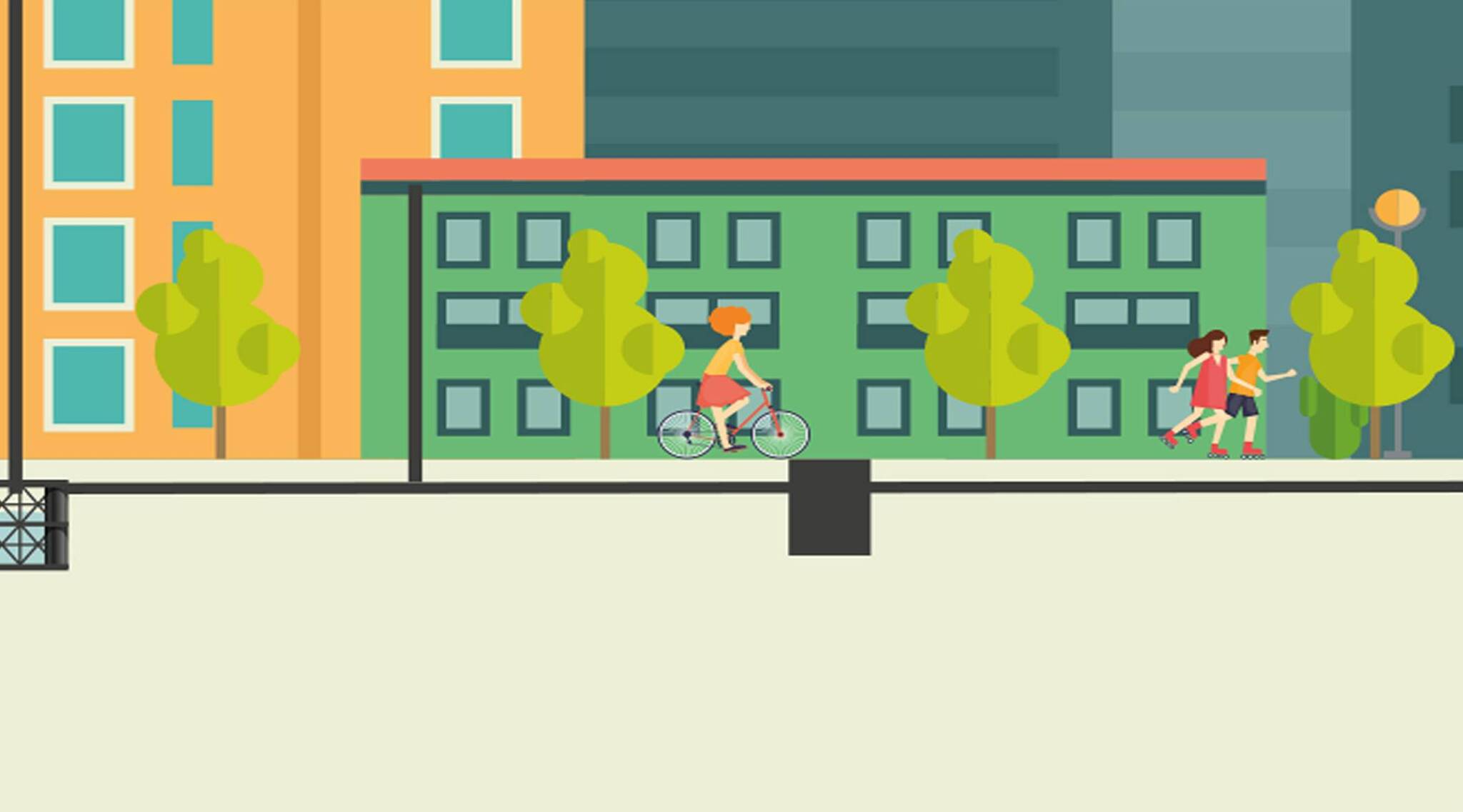
SuDS can provide exciting opportunities. They not only deliver water management solutions to help mitigate the effects of flooding, but also solutions that enhance natural and man-made vegetation to promote biodiversity. Our systems, either within Blue-Green roofs or at ground level, reuse rainwater to irrigate vegetation, introduce wetlands for wildlife within new developments, and even mimic natural swales. All of which are designed to allow plants and trees to flourish, creating natural environments that attract birds and insects back into our cities.
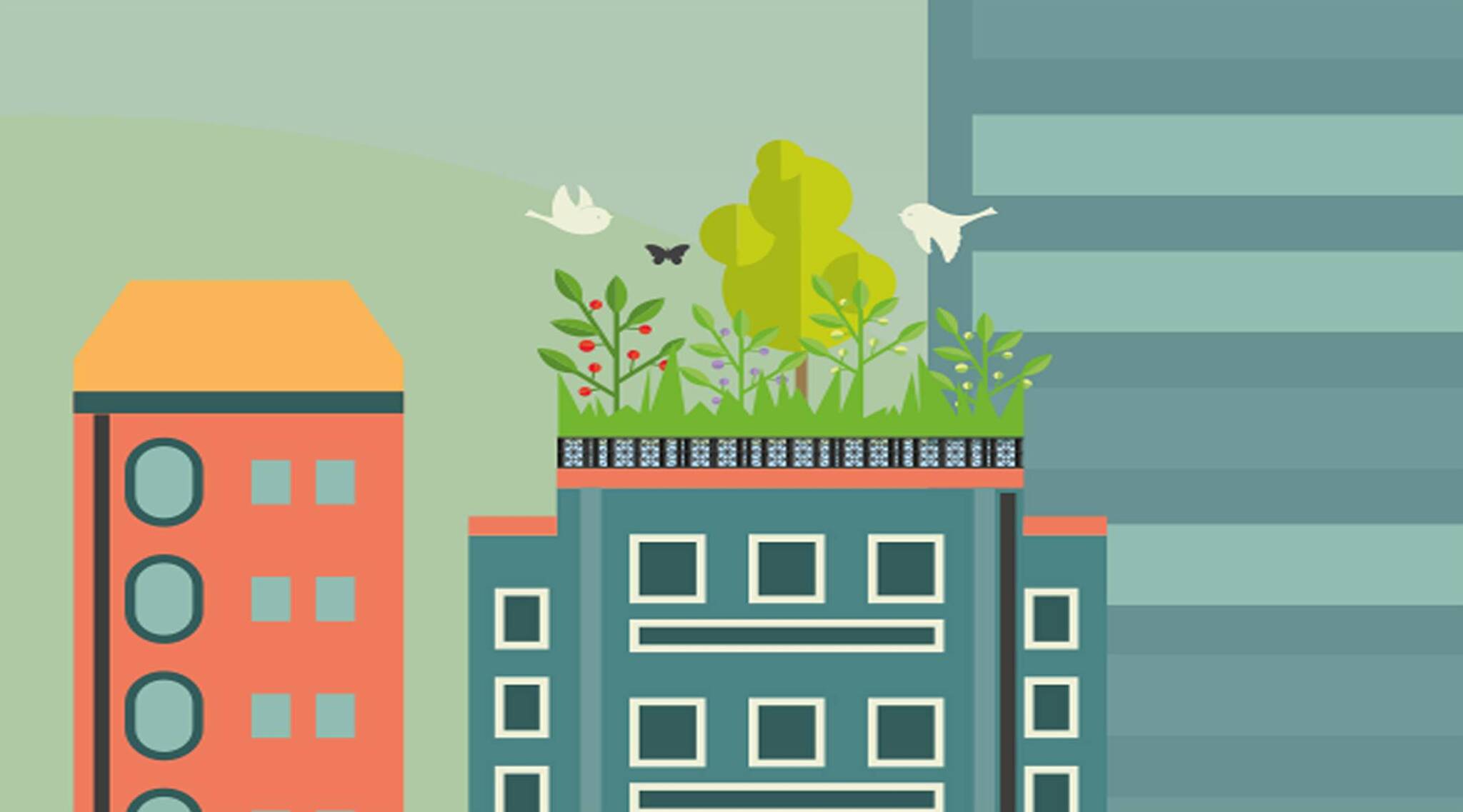
Global warming, climate change and carbon emissions all have an impact on the future of our cities. But foliage, wetlands and open spaces all help to reduce carbon and, within our cities, large canopy trees in particular, create shading to reduce Urban Heat Island effect and the need for air conditioning.
At Polypipe, we continually invest in research and development to engineer products that support these elements. Today, our sustainability credentials are as important to us as the products we provide, building-in carbon and water-sustainable solutions to help towards a more resilient future for us all. Adopting a circular and micro-economy attitude enables us to manufacture plastic products and systems that extract the maximum value from the resources we use.
We have products and systems that store rainwater at source, reusing it for roof gardens and irrigation which subsequently creates evaporative cooling through the vegetation. We can help with the management of green walls that cool buildings and trap and absorb harmful pollutants. We’ll help design engineered SuDS for street tree planting, introducing products that can store and attenuate rainwater below ground and feed and contain the roots of the trees as they grow. And to reduce surface water run-off and flooding whilst promoting greenery and evaporative cooling, we have solutions to simulate swales and treat ground water at source.
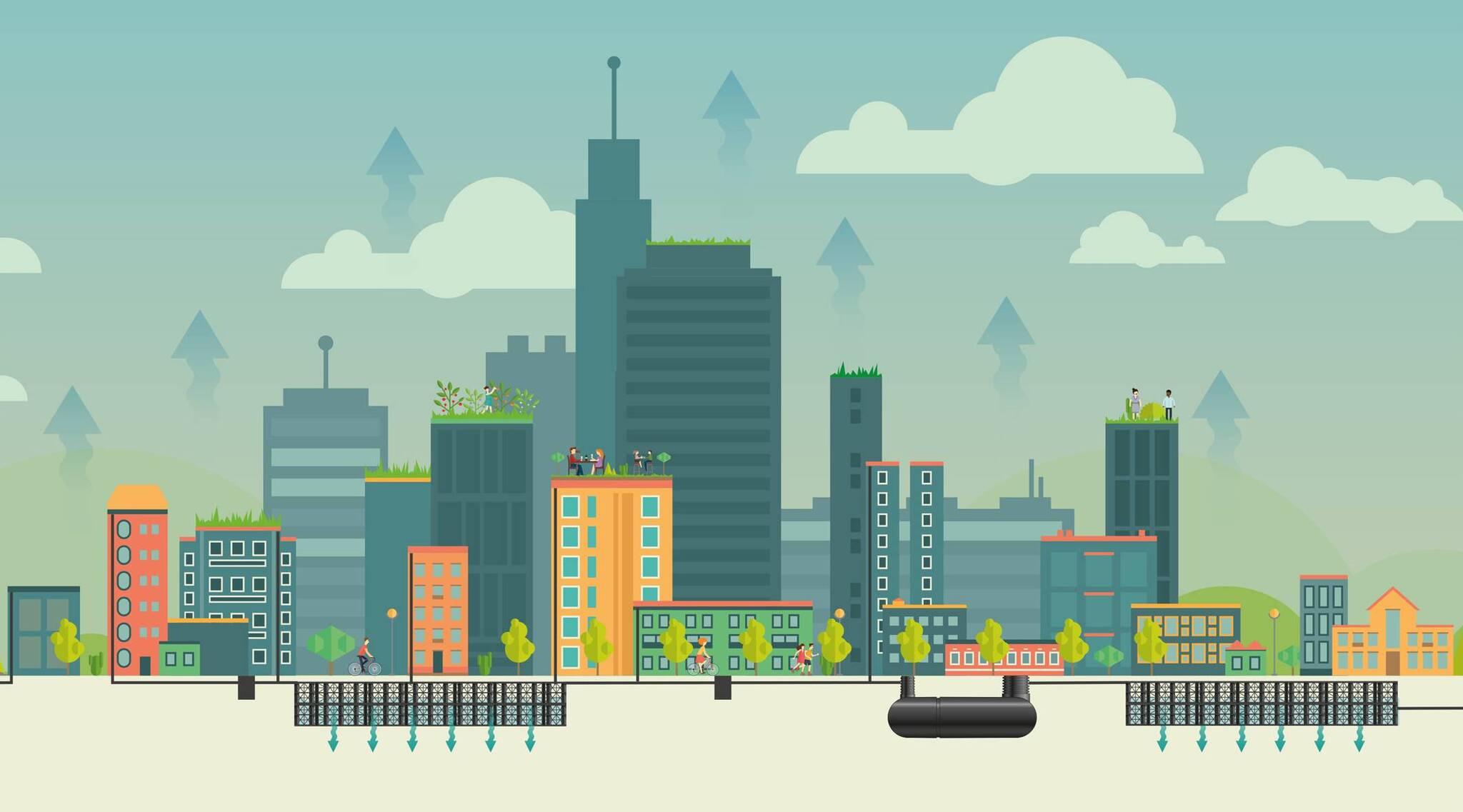
Designing Green Infrastructure water management solutions, particularly at the early stages of a project, not only delivers a project that enhances a city’s resilience, but brings prosperity through added value. Simple design solutions such as creating a network of green corridors between urban areas, can encourage more activity. They also add more interesting environments en-route whilst improving ecological connectivity and providing important habitats to attract biodiversity.
Repurposing spaces in buildings or utilising ‘dead’ space to create amenity is also achievable designing with Blue/Green Infrastructure. With the use of podium decks, geocellular units and water treatment products, roof space and ground level hard surfaces can be transformed into workable and successful leisure and retail spaces. Rooftop restaurants and bars are gradually becoming commonplace, whilst commercial office car parks are hidden beneath workplace gardens that are fed via self-perpetuating, rainwater reuse irrigation systems.
We understand how to achieve these positive outcomes, designing products that make space for water such as Polypipe geocellular systems including capillary cones for wicking – to be able to create such amenities as rooftop restaurants, parkland above underground car parks and greener spaces within cities. BGI can transform retail spaces to increase trade by up to as much as 40%2. Whilst a more vibrant green environment has been found to boost property prices by 2.6% to 11.3%.3
Furthermore, they attract inward investment, increase land values and improve planning application and government tender success rates4.
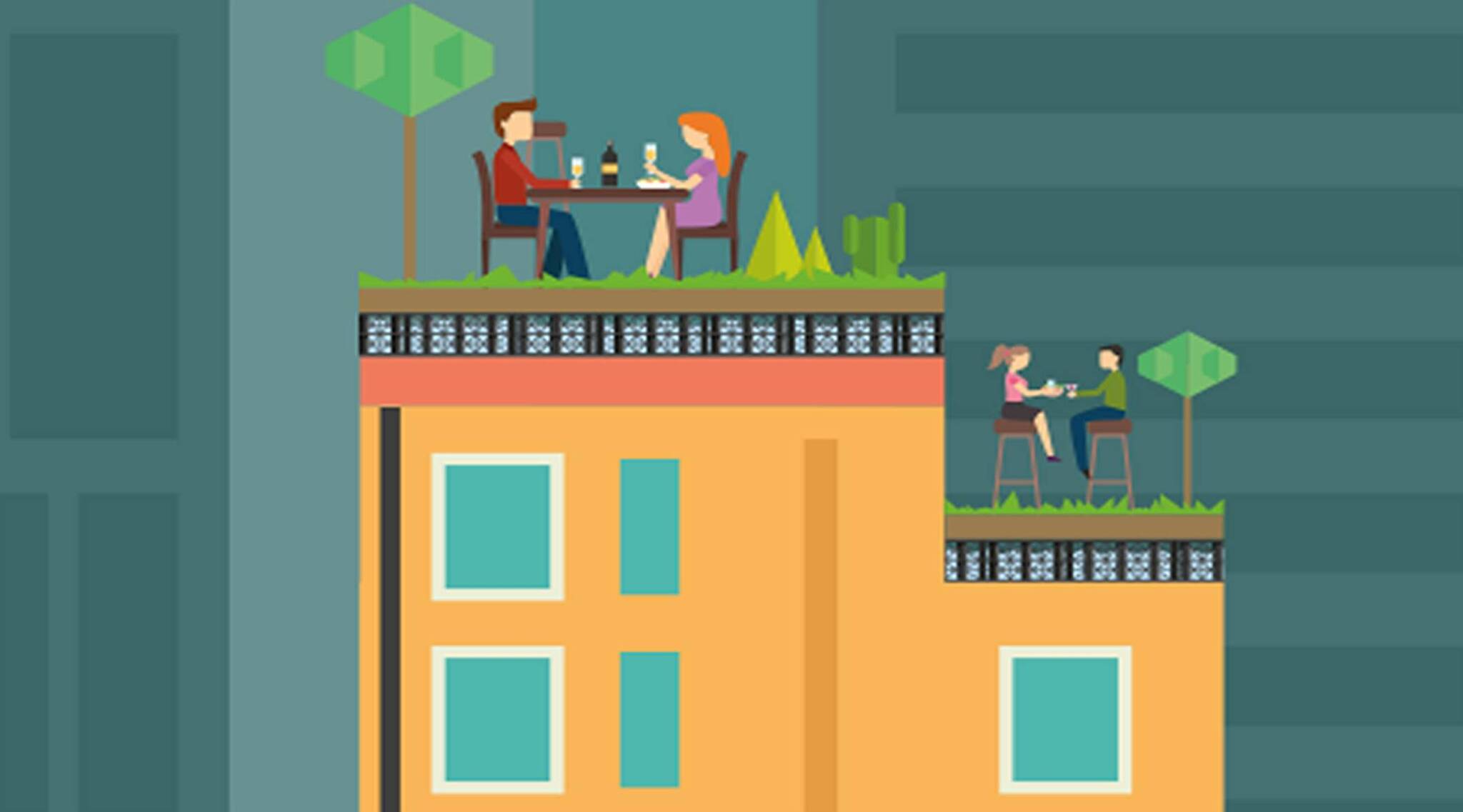
Green infrastructure X


